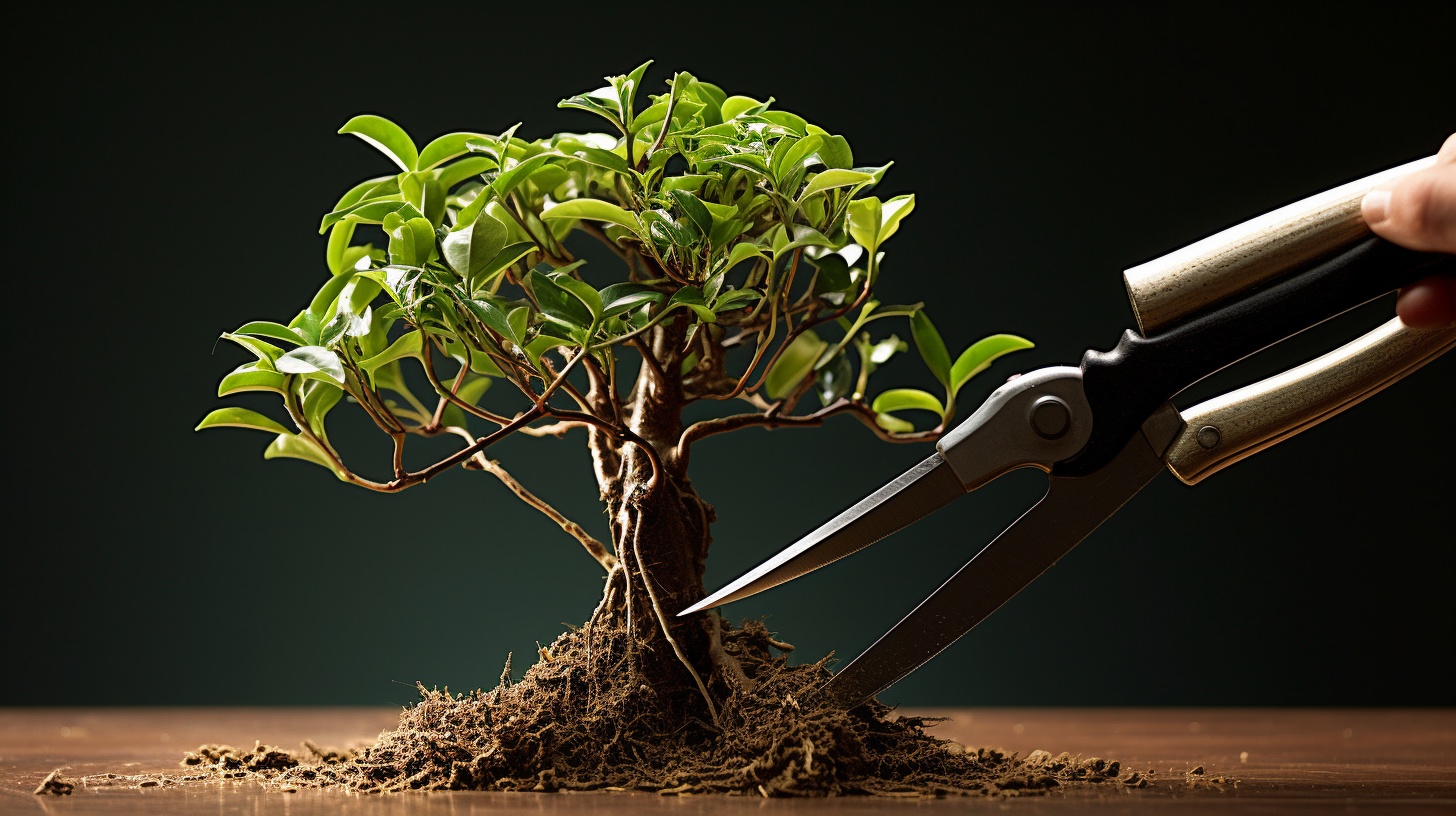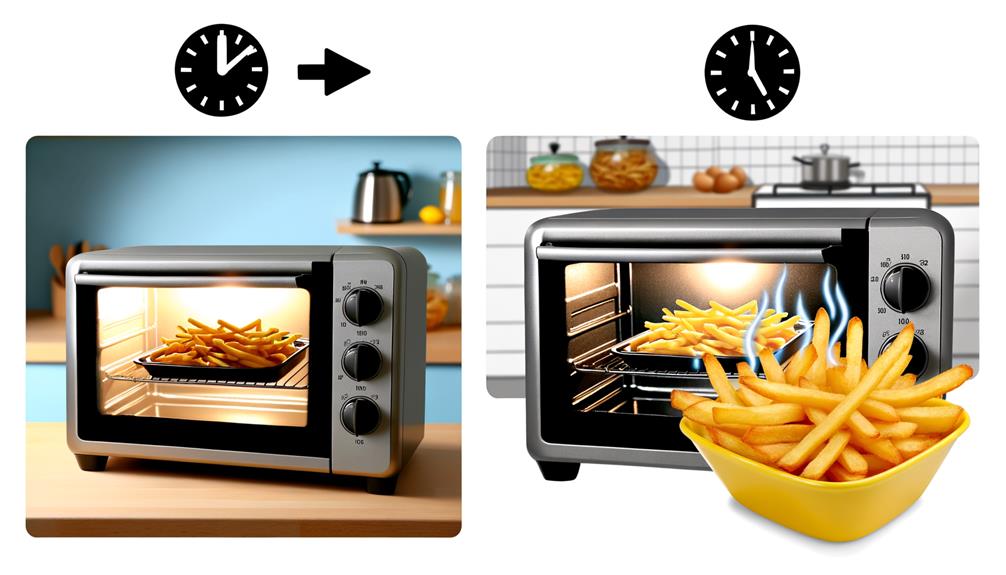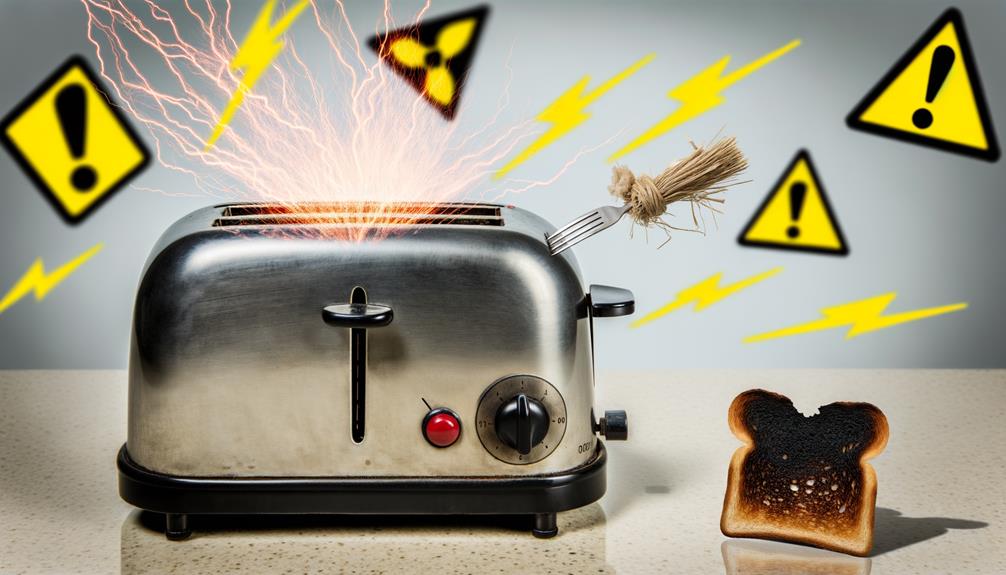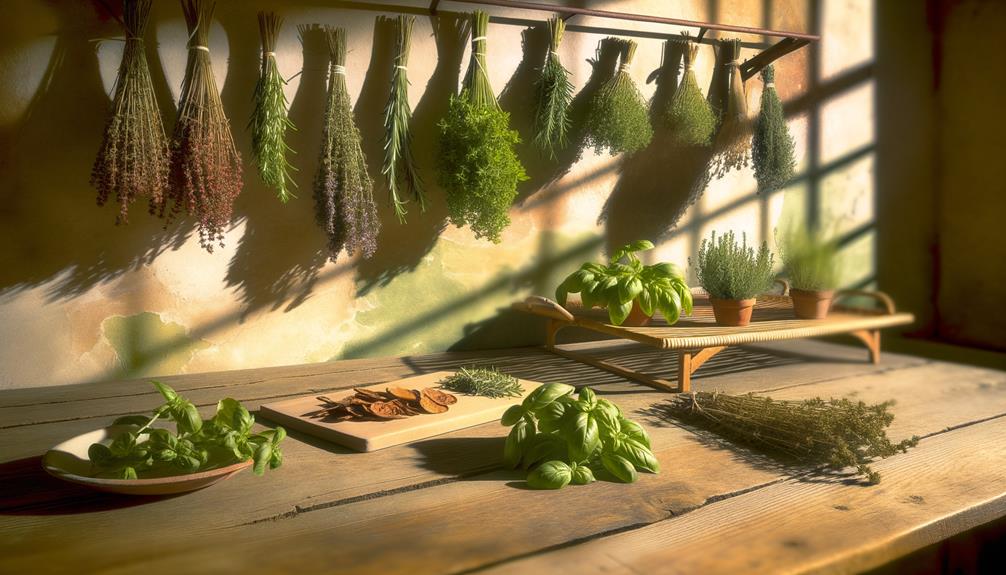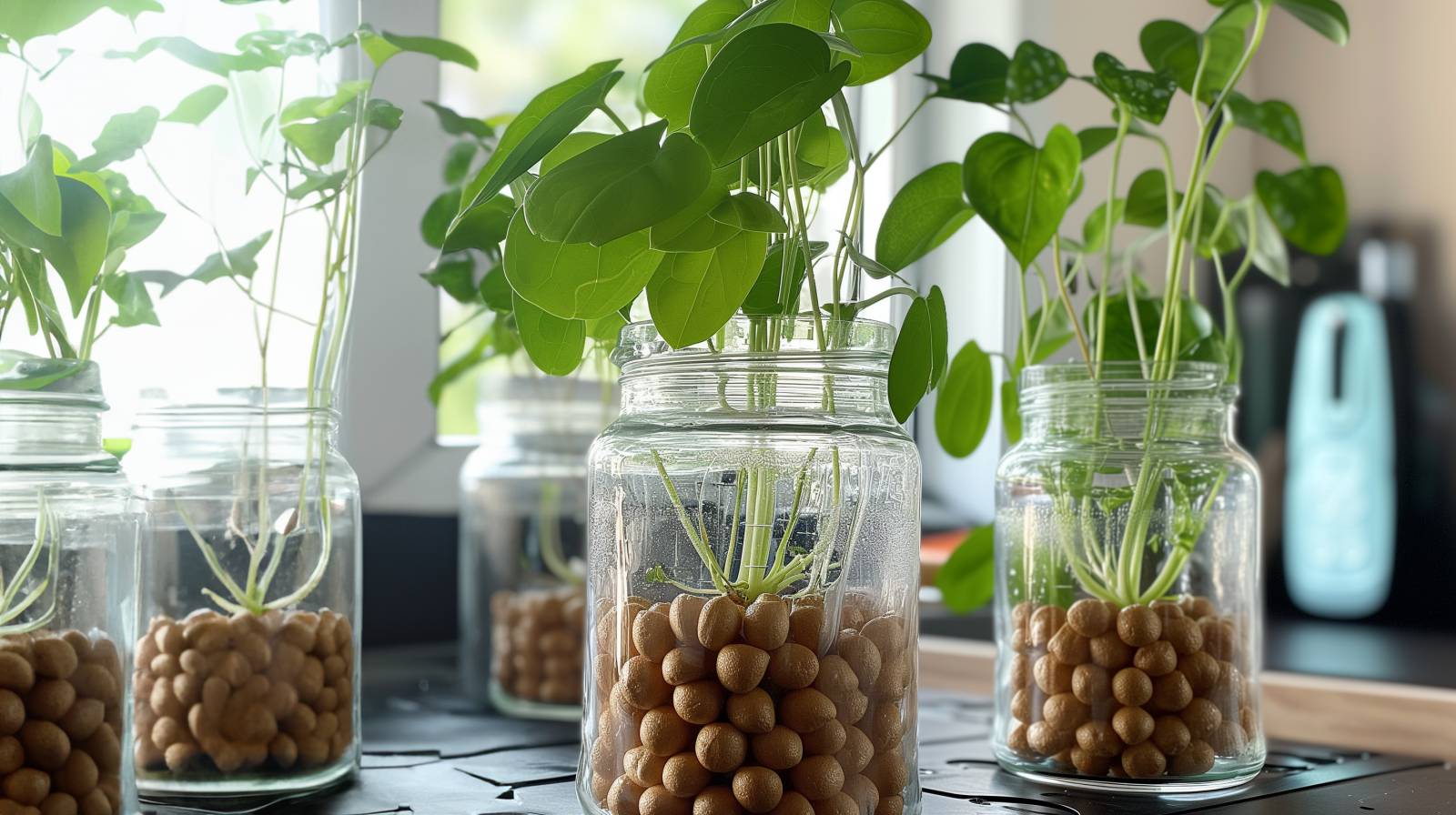Are your plants looking a little lackluster? Are their leaves turning yellow, and growth seems to have come to a standstill? Don’t worry, there’s a solution that doesn’t involve repotting them into larger pots or breaking the bank.
Table of Contents
ToggleIt’s time to revive your plants with root pruning! Root pruning is an effective alternative to repotting root bound plants. By cutting off about a third of the root structure, you stimulate the growth of new roots, increasing the overall density of the root system. This allows your plants to absorb more water and nutrients, leading to healthier foliage and vibrant growth.
Get ready to breathe new life into your plants and watch them thrive with root pruning!
Key Takeaways
- Root pruning is a valid alternative to repotting a root bound plant.
- Root pruning stimulates the growth of new roots, increasing the overall density of the root system.
- Root pruning gives old, tired roots a new lease of life.
- Root pruning can make a tired-looking plant thrive.
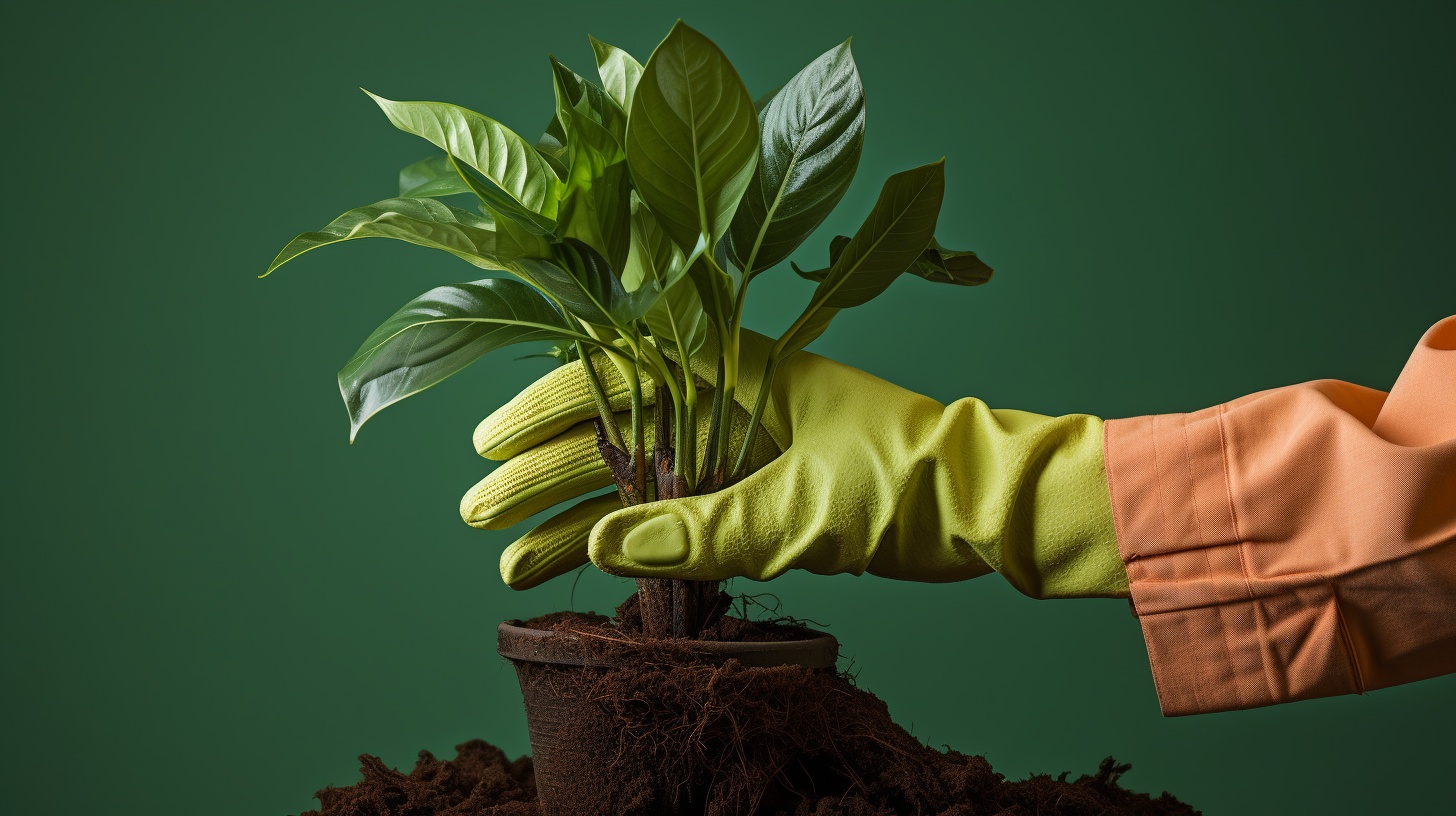
Benefits of Root Pruning
If you’re looking to revive your plants, root pruning can provide numerous benefits. Root pruning techniques involve cutting off a portion of the plant’s root structure, stimulating the growth of new roots and increasing the overall density of the root system.
This allows the plant to absorb more water and nutrients, leading to healthier growth. Not all plants are suitable for root pruning, so it’s important to know which are the best plants for this technique.
Plants like syngonium, peace plant, and Chinese money plant have shown fantastic responses to root pruning, with lots of new growth and a healthier appearance. By selectively pruning the roots, you can give your tired-looking plants a new lease of life and help them thrive.
So why not give root pruning a try and see the amazing results for yourself?
How to Perform Root Pruning
To perform root pruning, start by identifying a plant that needs attention and laying it on a surface. Here’s a step-by-step guide to help you through the process:
Tools required:
- Use a sharp knife or scissors to make clean cuts on the roots.
- Prepare fresh soil to replace the old one in the pot.
- Choose a pot that is suitable for the size of the plant after pruning.
Carefully lift the plant out of its pot and place it on a surface. Gently remove any loose soil from the roots to get a clear view of the root structure.
Inspect the roots and look for any thick, circling, or tangled roots. These are the ones that need to be pruned. Avoid cutting into rhizomes or thick roots of certain plants.
- Zen port Root Pruning Saw S148 For Pruning Root Systems 5. 9-Inch Blade (148mm)
- Tired of having to break those thick branches for firewood with the bottom of your foot?
- Or, having to rip those pesky roots apart with your bare hands?
- Our hand saw for cutting through High-carbon steel, 7″ razor tooth blade cuts through branches up to 4″ in diameter.
- Triple-cut razor teeth of the pruning saw hardened to stay sharp for smooth, fast sawing.
- Ergonomic and comfortable handle of the small saw fits the hand naturally and is designed to prevent dropping when loosely held. It remains stable during strong pulls resulting in accurate cuts.The size will work with any hand size from small to extra-large.
Common mistakes to avoid
Avoid pruning more than half of the roots as it can hinder nutrient absorption and lead to potential disease problems.
Ensure that the crown of the plant is level with the soil surface to prevent rotting.
Remember, root pruning can be a great way to revive your plants, but it’s important to follow the proper techniques and take care not to damage the plant further.
Care After Root Pruning
After root pruning, you should provide proper care to ensure the health and growth of your plants. It’s important to understand that there might be a recovery time for your plants after root pruning. Don’t be alarmed if you notice some temporary side effects, such as dropping or yellowing leaves. This is normal and not a cause for panic.
Stick to your normal care routine and make sure your plants have proper lighting and watering. Give them lots of natural light and place them in a bright spot. Stunted growth may occur in the first few weeks after pruning as the roots are being replaced.
As for common concerns, be mindful not to prune more than half of the roots as it can affect nutrient absorption and potentially lead to disease problems. Remember to use a clean knife or scissors when making cuts and avoid cutting into rhizomes of plants like ZZ plant to prevent die back.
With the right care, your plants will bounce back quickly and thrive.
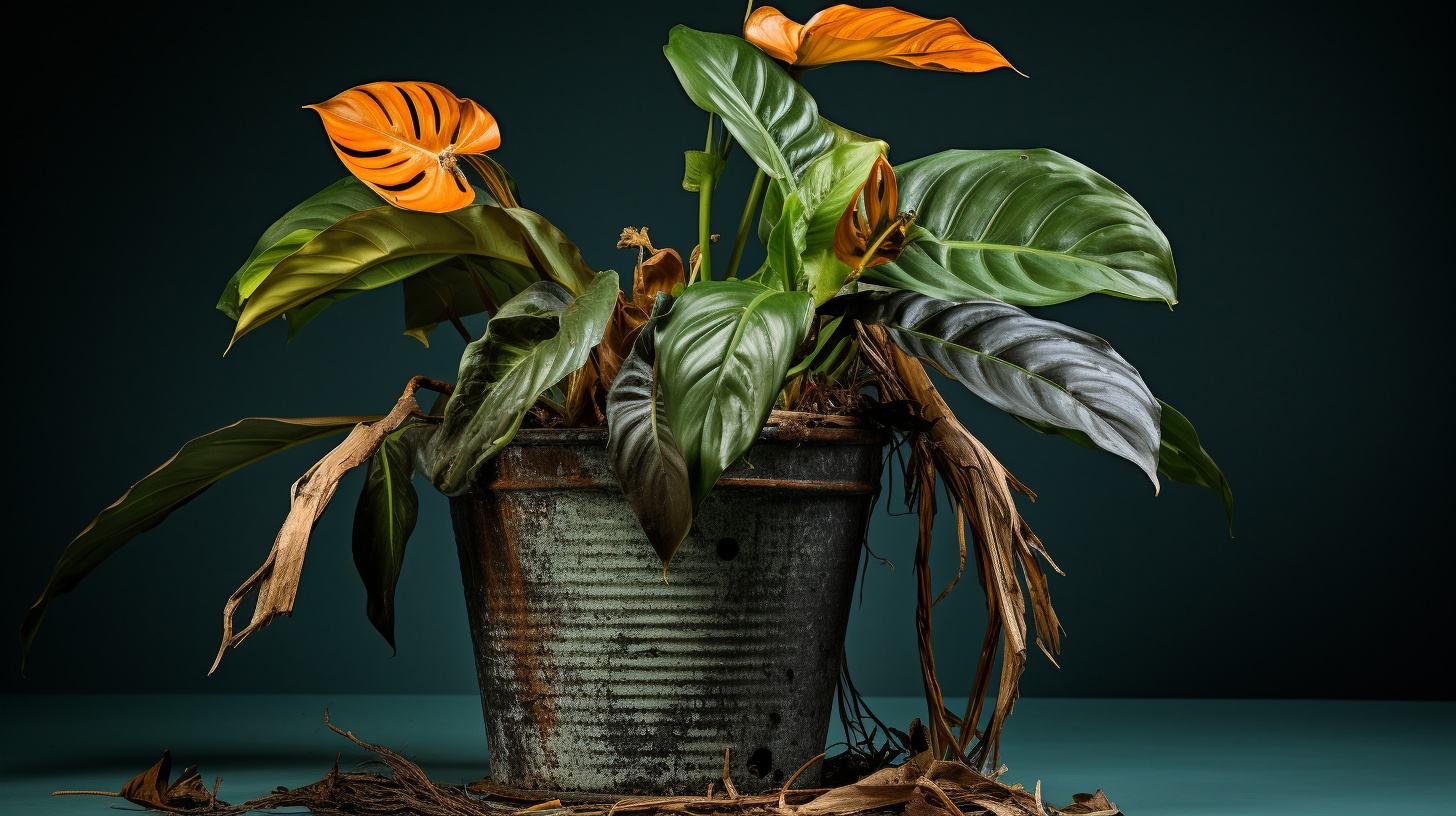
Root Pruning Tips
Here are some tips for successful root pruning:
- Gradual pruning: Cut off about a third of the root structure at a time to avoid risking the plant’s health. Pruning more than half of the roots can hinder nutrient absorption and invite potential disease problems.
- Proper planting: Place the plant back in its pot with fresh soil, ensuring the crown is at soil level. Fill the pot with soil, making sure there aren’t any air gaps.
- Adequate lighting: After root pruning, place the plant in a bright spot with lots of natural light. This’ll help the plant bounce back quickly and promote healthy growth.
- Normal care routine: Continue to provide the plant with proper watering and regular care. Dropping or yellowing leaves may occur temporarily, but with proper care, the plant will recover.
Root pruning has shown fantastic results, with increased density in the root system and thriving foliage. Try these techniques and see your plants flourish!
Pruning Root Bound Plants
When plants are allowed to grow in pots for extended periods, their roots can become tightly packed, resulting in a condition known as being root bound. This happens when the roots outgrow the container and become entangled, restricting their ability to absorb nutrients and water effectively. To address this issue, gardeners prune root bound plants in order to stimulate new root growth and maintain overall plant health. By carefully removing the excess roots and loosening the tangled mass, the plant can establish a stronger root system and enhance its ability to absorb essential resources from the soil.
Troubleshooting: What If My Plant Doesn’t Recover After Root Pruning?
In some cases, you may notice your plant doesn’t recover as expected after root pruning. This can be due to several factors, such as over-pruning, inadequate care, or underlying plant disease. If your plant appears distressed after root pruning, it’s essential to identify and address the cause promptly.
Here are some troubleshooting steps you can follow:
- Check if the plant was over-pruned: Remember that you should only prune about a third of the root structure at a time. If you pruned more than this, it could cause the plant to struggle as it may not be able to absorb adequate nutrients and water.
- Inspect for signs of disease or pests: Drooping, yellowing, or wilting foliage can be signs of disease or pests. If you notice these symptoms, isolate the plant and treat it accordingly.
- Review your care routine: Ensure the plant is receiving the right amount of water, light, and nutrients. Different plants have different care requirements, so make sure you’re providing the conditions your particular plant needs to thrive.
- Seek professional help: If the plant’s condition continues to worsen, it might be best to seek advice from a local nursery or a plant specialist.
Remember, while root pruning can greatly benefit your plants, it’s not a guaranteed fix for all plant issues. It’s important to understand your plants’ needs and provide them with the necessary care for them to thrive.
Root Pruning and Repotting: What’s the Difference?
While both root pruning and repotting aim to improve the health and growth of your plants, they differ in their approaches and when you should employ them. Let’s explore the differences:
Repotting involves moving a plant to a bigger pot to provide more space for the root system to grow. You usually repot when the plant has outgrown its current pot, evidenced by roots growing out of the drainage holes or circling around the surface of the soil. Repotting provides immediate relief to a root-bound plant, giving it more space and fresh soil.
Root Pruning, on the other hand, involves trimming the roots to stimulate the growth of new, healthier roots. This is a great technique when the plant is showing signs of stress, such as yellowing leaves or stunted growth, but you want to keep it in the same pot. It’s also a good option when the plant has become too large for practical repotting.
Both techniques have their place in a plant owner’s toolbox, and understanding when to use each one can help keep your plants healthy and thriving.

Final Thoughts
Remember, just like us, plants need proper care and attention to thrive. Whether you’re a seasoned plant parent or a beginner in gardening, understanding techniques like root pruning can help you provide your plants with the best possible care. Root pruning isn’t a universal fix, but when used correctly, it can breathe new life into your plants, promoting healthy growth and beautiful foliage.
Frequently Asked Questions
Can root pruning be done on all types of plants?
Root pruning can be done on most types of plants. However, there are some cases when it should be avoided, such as when a plant has delicate or sensitive roots. The benefits of root pruning include stimulating new root growth and improving nutrient absorption.
Are there any plants that should not be root pruned?
Some plants should not be root pruned, as it can cause issues with nutrient absorption and potential disease problems. Instead, consider alternative methods for rejuvenating these plants, such as repotting or other care techniques.
How long does it typically take for a plant to bounce back after root pruning?
After root pruning, plants typically bounce back within a few weeks. The benefits of root pruning include stimulating new root growth, increasing nutrient absorption, and rejuvenating tired roots.
Can root pruning be done multiple times on the same plant?
Yes, root pruning can be done multiple times on the same plant. It offers several benefits such as stimulating new root growth, increasing nutrient absorption, and giving tired roots a new lease of life. Techniques for root pruning involve cutting off about a third of the root structure at a time.
Are there any specific signs or symptoms that indicate a plant is in need of root pruning?
Signs of root pruning need include a root-bound plant with yellowing foliage and stunted growth. Common mistakes in root pruning include cutting off more than half of the roots and not placing the crown of the plant at soil level.

